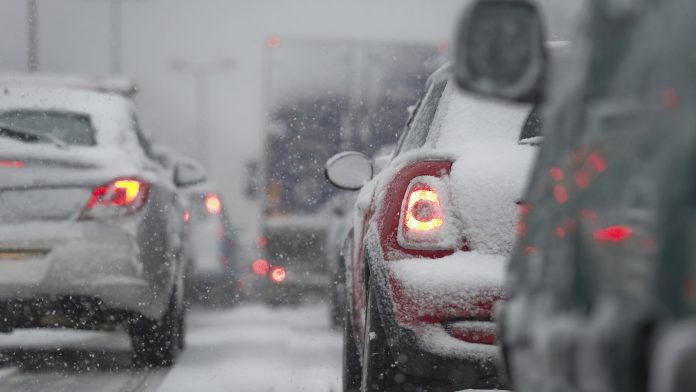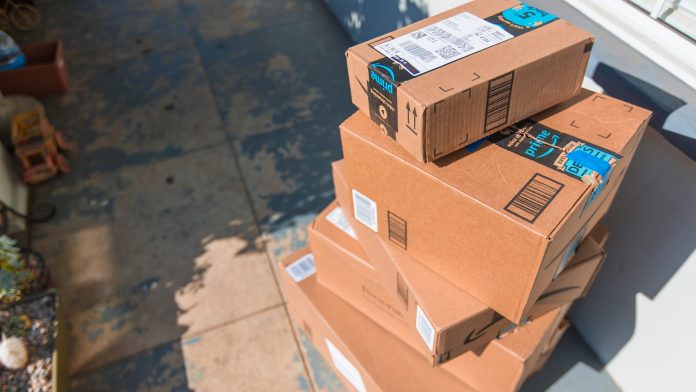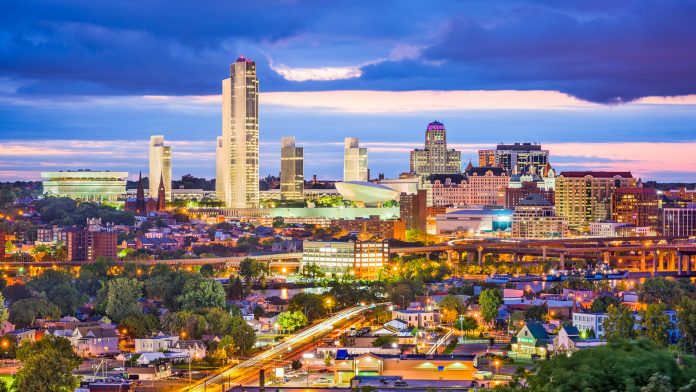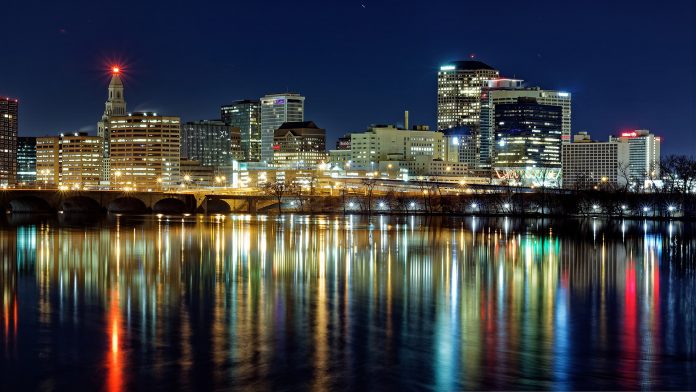What’s Your Solution for Expedited Shipping?
There are more than 163.5 million Amazon Prime subscribers in the United States, which is expected to grow to 176 million in 2025.
If you’re a paying Amazon Prime member like a lot of people, you probably love the fact that you can order almost anything from your phone, computer, or iPad and it will be at your doorstep within two days. While we may not have time to roam aisles, with the quick touch of a few buttons, almost anything we want, or need, will be on its way without ever stepping foot in a store.
But have you ever considered how this expedited shipping process works? Like how you can order a tote bag made in China or a dress from a store in California, and it shows up at your doorstep in no time? Based on “Track My Package,” once an order is placed and a customer service agent has verified the order, your purchase(s) are gathered and packaged. If the items are at one location, this usually happens together; if not, this process happens twice.
After your items have been processed, if you are buying from an international vendor, your items will have to get on a plane that uses approximately 1 gallon of fuel every second. That means that over the course of a 10-hour flight, it might burn 36,000 gallons for you to receive your products as promised. (A weight equivalent to a blue whale.) Once your package lands in the U.S. and is unloaded, it is quickly moved into cargo bins for another plane or semi-truck to transport to the appropriate facility. If you’ve ordered from the U.S., this is the next leg of your package’s journey. Once it arrives in your neighborhood’s designated sorting facility, your local USPS, FedEx, or UPS driver collects your package and delivers it straight to your door.
Even for the orders you don’t need to be rushed; this process is essentially the same. Only your products may arrive by ship, plane, or truck that is not “expedited,” which means it will take a little longer to reach you at your destination. Yet, none of this would be possible without affordable energy sources. Planes use jet fuel. Ships and semi-trucks use diesel and gasoline.
Many of us tend to think that certain types of energy are only used to heat and cool homes or help our passenger cars and trucks operate, but understanding that many of the luxuries we have – like expedited shipping – to help us get the things we want, and need, faster and more efficiently, it is important to understand the greater role that energy plays in our daily lives.
That’s why we must have balanced and thoughtful discussions about energy policy. Whether we know it or not, energy affects almost everything we do and use daily. Without it, we would be waiting weeks, not days, to get our products if it weren’t for affordable and reliable energy.
Cold Costs: Texas Freeze Will Mean Higher Energy Bills
CEA President David Holt joined KPRC to talk about the impact colder temperatures will have on Texans’ energy bills this winter.
Listen here – KPRC AM 950
Flying on Fumes? How Net-Zero Oil Will Fuel Flights of the Future
On average, over 45,000 aircraft take off across the United States, carrying over 2.9 million passengers to destinations across the country, connecting them to friends, family, and business opportunities. Combined, these daily flights require over 157,500,000 gallons of jet fuel each day, and that is just in the United States.
Air travel is booming too. Unlike the early days of travel, new low-cost carriers are helping people of all socioeconomic standing see the United States and the world. Estimates show that the number of passengers will double over the next twenty years.
This doubling of passengers is what led the International Energy Agency to predict that aviation will account for 15 percent of global oil demand growth over the next decade. Think about it. The average jet fills up with 3,500 gallons of jet fuel, which can cost upwards of $11,690.
All that fuel has to be burned emitting carbon dioxide as you fly. In 2018, it is estimated that global aviation – which includes both passenger and freight – emitted 1.04 billion tons of CO2. This represented 2.4% of total global CO2 emissions in 2018, according to the Environmental and Energy Study Institute. In their issue brief, they said that percentage is expected to triple as passenger travel and freight travel increase into 2050.
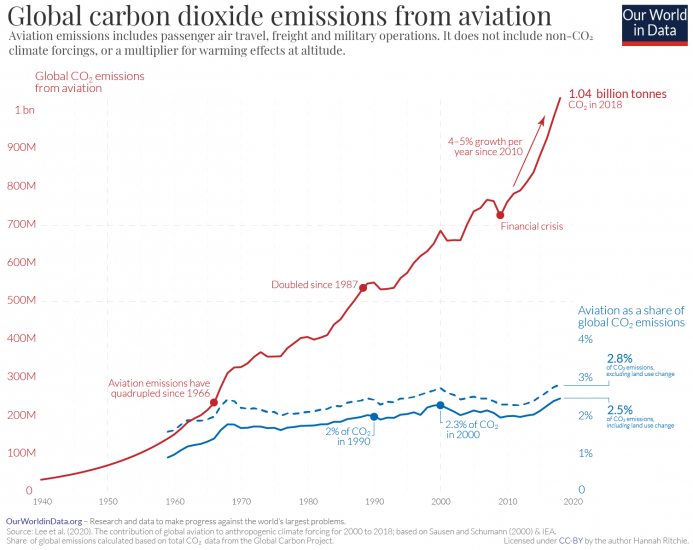
With the fluctuating price of jet fuel, supply constraints, and concerns over the industry’s environmental footprint, airlines worldwide are looking for ways to become more fuel-efficient and eco-friendly. This is why U.S. airlines have improved fuel efficiency by over 135 percent since the 1970s. Becoming more fuel-efficient not only allowed many more people to afford airline tickets but also substantially reduced CO2 emissions.
Yet, despite these efficiency improvements, airlines worldwide are still looking for ways to increase the sustainability of their operations instead of just having more fuel-efficient planes and routes.
So what are they looking at? Sustainable aviation fuel.
Sustainable aviation fuel (SAF) is a variety of different types of jet fuel. Some ideas suggest using less crude oil through blending and others propose no crude oil at all to lift jets into the sky. As a result of all these options, some refiners are using waste fat and grease from restaurants, while other refiners are focusing on dried biomass from corn, algae, or jatropha – a shrub or small tree that grows in Central and South America.
While there is a lot of research and testing, the Biden Administration hopes to accelerate the process by calling for 3 billion gallons of sustainable aviation fuel to be produced by 2030. The largest focal point – and optimism – for biofuel resides in America’s Heartland, where large amounts of low-cost ethanol can be produced.
Even as the airline industry looks to sustainable fuel to reduce their CO2 emissions, the companies that will need to produce sustainable aviation fuel have their own emissions to deal with. For example, average ethanol plants producing biofuel today emit 150,000 metric tons of CO2 annually. Although research continues into the plants and processes utilized to produce biofuel with fewer emissions, the fact remains that increasing our reliance on these facilities for 3 billion more gallons of fuel each year will only lead to growing CO2 emissions.
With jet fuel representing 20%-30% of airlines operating costs, the price of SAF will be a major consideration for pricing tickets. While the urgency to develop SAF is critical, no alternative fuel is approved at more than 50% blending with conventional fuel, according to the U.S. Department of Energy. That means, in the near term, we will need to continue to address the issues of emissions that we have solutions for now.
Because of this blending wall, enhanced oil recovery using carbon capture is one of the best options for reducing CO2 out of the air. Capturing carbon and using it for enhanced oil recovery accomplishes three key goals for sustaining our environment, as noted by the International Greenhouse Gas protocols. First, the EOR process results in safe, long-term storage underground preventing CO2 from entering our atmosphere. Secondly, the use of CO2, along with enhanced oil recovery, allows for existing oil wells to be utilized more efficiently – creating energy security while keeping the environmental footprint of their operations to a minimum. Lastly, and most important, CO2 and EOR using industrially captured carbon produces oil that is net-negative in carbon emissions.
Not only would this allow blended jet fuel to be net-negative, but the processing plants would also be net-negative and airlines could capitalize on fewer variations in fuel prices. Overall, these solutions help mitigate emissions and answer the question of how when we need them most.
Fortunately, industry leaders have already acknowledged this simple fact. And these leaders believe carbon capture is the solution.
New Yorkers Can Expect to Pay Over $27,000 to Retrofit Homes to All-Electric Appliances: CEA Study
Analysis Shows Price Increases Will Increase Inequality, Reduce Energy Reliability
SYRACUSE, NY – Banning natural gas service will increase inequality, risk electricity reliability and could cost upstate New York households more than $27,800 each, a Consumer Energy Alliance (CEA) analysis released today found.
The new study, Increasing Inequality, Risking Reliable Electricity: New York’s Natural Gas Ban Plan, complements earlier analyses by CEA demonstrating the high costs of government plans to ban natural gas in upstate and New York City.
With this winter’s energy bills expected to force Americans to pay at least $14.1 billion more than last year, and inflation at the highest level since the early 1980s, policies that reduce energy reliability and affordability make no sense in a state where three out of five homes use natural gas for heating.
“We have seen what reducing energy options has done to European countries – driven energy prices up more than 300% for some and forced others to burn garbage to stay warm. Already, New York’s poorest are leaving their ovens open to heat their homes and families,” CEA New York Director Wendy Hijos said.
A legislative plan to ban natural gas, a product of the Climate Leadership and Community Protection Act (CLCPA), died during budget negotiations but is set to be revisited this year.
“Revisiting a natural gas ban in a state like ours, where winters can be vicious and deadly, is nothing short of foolhardy and would harm families and small businesses,” she said. “We hope New York lawmakers think twice before adopting policies that have failed elsewhere spectacularly, and work toward common-sense plans that balance our energy needs with our shared environmental goals.”
The updated statewide report examines the cost of converting households in to all-electric appliances, using open-source consumer data and a CEA-developed cost calculator that takes into account home configuration, appliance models and labor. These findings dovetail with CEA research which found that the cost to replace just major gas appliances in homes nationwide would be more than $258 billion.
Please click here to read the report.
###
About Consumer Energy Alliance
Consumer Energy Alliance (CEA) is the leading voice for sensible energy and environmental policies for consumers, bringing together families, farmers, small businesses, distributors, producers, and manufacturers to support America’s environmentally sustainable energy future. With more than 550,000 members nationwide, we are committed to leading the nation’s dialogue around energy, its critical role in the economy, and how it supports the vital supply chains for the families and businesses that depend on them. CEA works daily to encourage communities across the nation to seek sensible, realistic, and environmentally responsible solutions to meet our nation’s energy needs.
Contact:
Bryson Hull
(202) 657-2855
bhull@consumerenergyalliance.org
There’s Low-cost Energy to Be Had, but Not for New England
As New England prepares for another uncertain winter, CEA’s Marc Brown explores the policies that are causing the region’s electricity bills to surge ahead of the national average, squeezing family budgets.
Regulations that reduce energy options add to our base electricity rates, which hit low and fixed income residents hardest. Massachusetts has the fourth-highest residential electricity rates in the country at 25.2 cents per kilowatt-hour, behind Hawaii, California and Connecticut. States a few hundred miles away pay four to five times less for natural gas than New England in the winter, and Mass. residents should be asking why.
Read more – Boston Herald
WFEA’s Morning Update
CEA’s Chris Ventura joined Drew to talk about rising New England energy costs for home heating and gas prices as families prepare for the Thanksgiving holiday.
Listen here – WFEA 1370 AM
Oil and Natural Gas Producers Say Texas Has a Pipeline Problem
CEA President David Holt joined KTRH to talk about how pipeline constraints are contributing to the increased volatility of energy prices, and how new and modernized infrastructure can help bring savings to energy consumers.
Listen here – KTRH AM 740
New England’s Gas Constraints Mean More Help With Hefty Heating Bills
As consumers look at spending over $14.1 billion more on home heating and energy costs this winter, one of the hardest hit regions of the country will be New England. CEA’s Northeast Director, Marc Brown, examines how misguided public policies have placed New England in one of the most precarious situations in the country, and what must be done to lower costs for families and businesses.
“The only real solution is to realize that this is a situation that is going to be with us for a long time,” Brown said, adding that raising the region’s pipeline capacity would put New England in a position to ride out future winters comfortably while giving the renewables sector more time to develop. “It is foolish to pay additional costs year after year and also be in opposition to a pipeline,” he said.
Read more – Daily Energy Insider
Buckle Up for ‘Worst Case Scenario’: Winter to Bring Massive Energy Price Increases
With a colder than normal winter expected for the United States, CEA’s David Holt joined CBN News to talk about how this will impact families across the country – and how they can cope with the projected $14.1 billion increase in home heating and energy bills this season.
Watch here – CBN News








